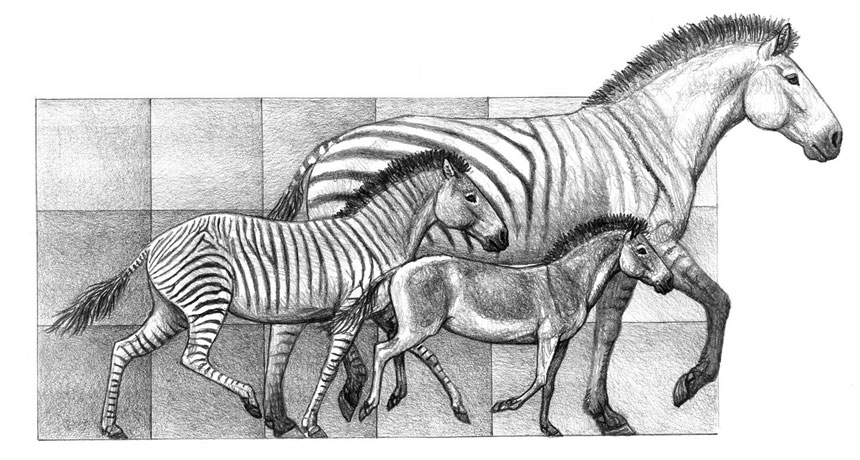Horses buck evolutionary ideas

A cautionary tale in evolutionary theory is coming straight from the horse’s mouth. When ancient horses diversified into new species, those bursts of evolution weren’t accompanied by drastic changes to horse teeth, as scientists have long thought.
A new evolutionary tree of horses reveals three periods when several new species emerged, scientists report in the Feb. 10 Science. The researchers found that changes in teeth morphology and body size didn’t change very much during these periods of rapid speciation.
“This knocks traditional notions that rapid diversification of new species comes with morphological diversification as well,” says paleontologist Bruce MacFadden of the University of Florida in Gainesville. “This is a very sophisticated and important paper.”
The emergence of several new species in a relatively short time is often accompanied by the evolution of special new traits. Classic notions of evolution say that these traits — such as longer teeth with extensive enamel — are adaptive, enabling an animal to succeed in a particular environment. In horses, the evolution of such teeth might permit a shift from browsing on leafy, shrubby trees to grazing on grasses in open spaces with windblown dust and grit.
“You can’t live on a grassland as a grazer and have short teeth,” says MacFadden, an expert in horse evolution. “You’ll wear your teeth down and that’s not a recipe for success as a species.”
Similarly, a big change in body size can indicate a move to a new environment. Animals that live in forests tend to be smaller and more solitary than the larger herd animals that live in open grasslands.
Paleontologist Juan Cantalapiedra and colleagues compiled decades of previous work to create an evolutionary tree of 138 horse species (seven of which exist today), spanning roughly 18 million years. The tree reveals three major branchings of new species: a North American burst between 15 million and 18 million years ago, and two bursts coinciding with dispersals into Eurasia about 11 million and 4.5 million years ago.
The researchers expected to see evidence of an “adaptive radiation,” major changes in teeth and body size that allowed the new horse species to succeed. But rates of body size evolution didn’t differ much in sections of the family tree with low and high speciation rates. And rates of change in tooth characteristics were actually lower in sections of the tree with fast speciation rates, the team reports.
“It’s very tempting to see some change in body size, for example, and say, ‘Oh, that’s adaptive radiation,’” says Cantalapiedra, of the Leibniz Institute for Evolution and Biodiversity Science at the Museum für Naturkunde in Berlin. “But that’s not what we see.”
Cantalapiedra and his collaborators speculate that during the periods of rapid speciation, the environment was so expansive and productive that there just wasn’t a lot of competition to drive the evolution of adaptive traits. Perhaps, for example, North American grasslands were so rich and dense that there was enough energy for various species to evolve without having to develop traits that gave them an edge.
That scenario might be special to horses, says MacFadden, but it might not. Similarly, classic adaptive radiation scenarios might be true in many cases, but as this work shows, not always.